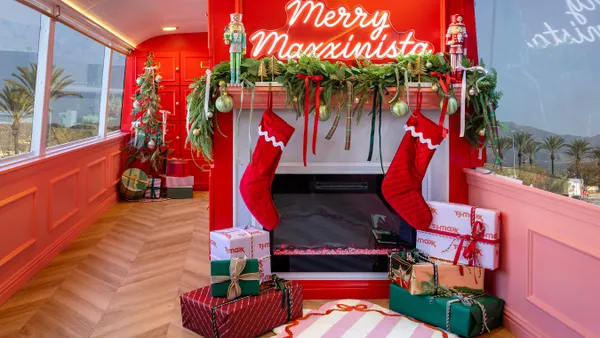Dive Brief:
-
Millennials and Gen Z will account for 45% of the global personal luxury goods market by 2025, according to a study by PMX Agency that was emailed to Retail Dive. Gen X is currently the largest consumer of luxury goods with 12.8% of women buying these products and 9.9% of Gen X men.
-
Ralph Lauren topped all other luxury brands in terms of online market share with 19.5%, followed by Michael Kors at 17.2%. The top eight luxury brands, according to the study, account for 78% of all online luxury traffic.
-
The study also found that luxury site visitors come mainly from search traffic, which drives just over half (50.2%) of referred traffic, followed by shopping sites (22.4%), social media (7.4%) and email (2.9%). Within the search traffic segment, 95% of customers come from Google.
Dive Insight:
In terms of web traffic, the most popular luxury brands have stayed roughly the same as last year — a trend that is also found in the product keywords that drive visits. Handbags and shoes are still the most popular keywords driving consumers to luxury brand websites, followed by accessories and apparel.
While Gen X currently tops the list of luxury consumers, millennials are close behind. The report found that 13.7% of women and 8.7% of men in that group buy luxury goods, just barely below the numbers for Gen X — and in fact more millennial women buy luxury goods than Gen X women.
While Gen Z didn't top this study, a July study from InMarket suggests that the youngest generation is even more likely than millennials to buy luxury products. That being said, Gen Z’s willingness to pay more for luxury brands might have to do with their financial independence (or lack thereof) at this stage of their lives, and could change as they age out of their allowance.
The report did show a strong leaning towards more digitally-savvy, mobile-focused consumers. Compared to the average internet user, luxury customers were 3% more likely to be on a mobile device, with 38% of online customers coming from that platform instead of from a desktop, according to the report.
Then there are the social media trends that PMX found, as they relate to luxury brands. All-in-all, luxury social media followers grew by around 27% in the last year, with Instagram growing 54%, Twitter 16% and Facebook just 4%. Instagram also got the most engagement at 93%, followed by Facebook (6%) and Twitter (1%).
The growth of Instagram is to be expected, considering the near-ubiquity of Instagram among luxury brands: research firm L2 found that 91% of luxury brands use Instagram influencers — the highest in the retail sector. Instagram has also begun to show its impact as a purchasing channel, with 72% of Instagram users saying their purchase decisions are influenced by the platform.
The impact of social media — and Instagram in particular — trends younger as well. Millennials had the highest likelihood of making a purchase based on an Instagram post, at 74%, and a host of studies on Gen Z has shown the younger group’s propensity to shop on mobile and on social.
The group converts twice as much on mobile as any other generation, 80% of them are influenced by social media and they care twice as much about social as they do about deals. Those numbers bode well if luxury brands are looking to keep in touch with a younger customer base as Gen Z’s get older — and more independent.














